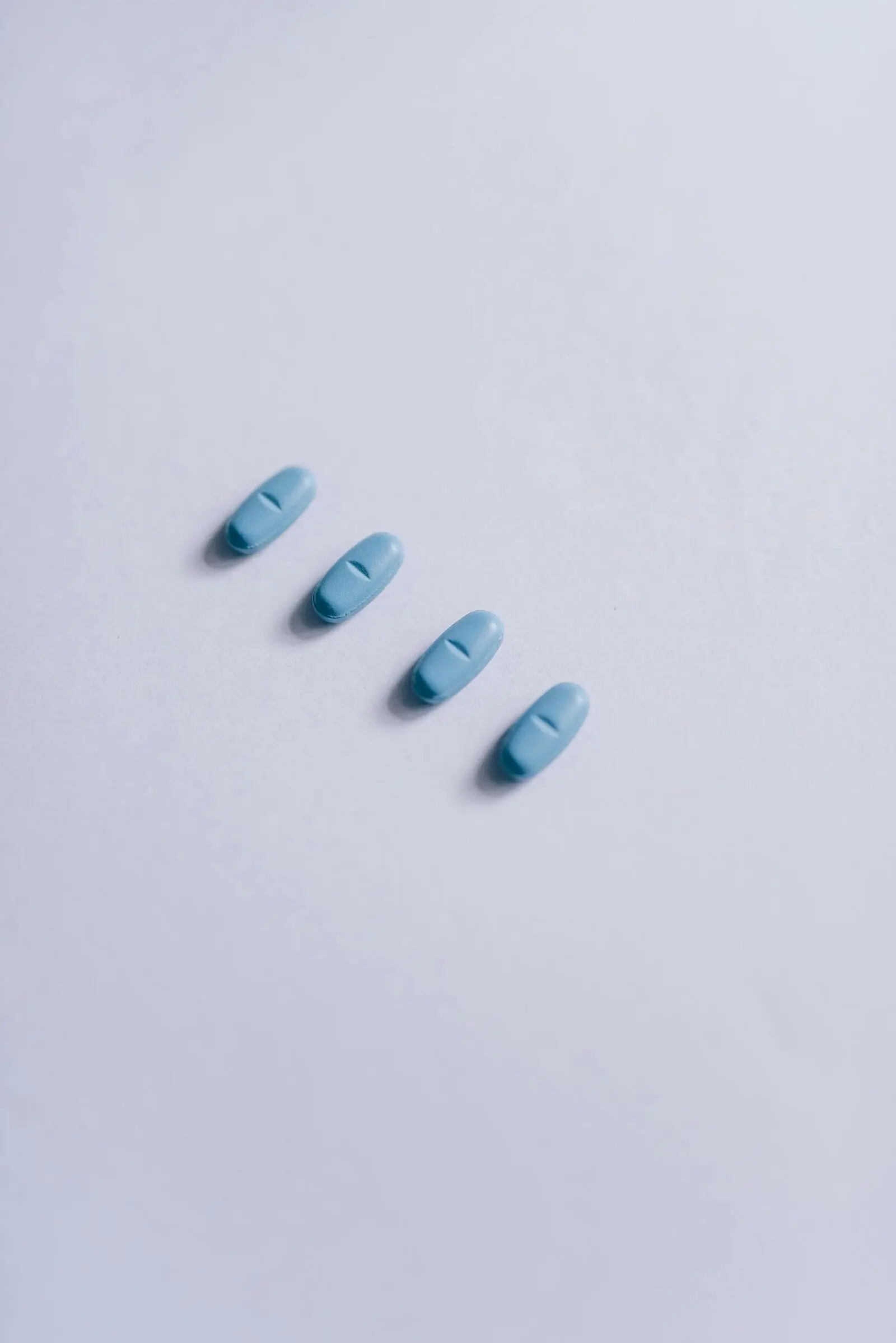Substances
What Is The Halcion Drug? Uses, Side Effects, and More
Medically Reviewed By
Written By
Last medically reviewed November 25, 2024
Substances
Medically Reviewed By
Written By
Last medically reviewed November 25, 2024

Halcion is the brand name for triazolam, a prescription medication that belongs to the benzodiazepine class of drugs. It works as a central nervous system (CNS) depressant and functions primarily as a sedative to treat severe insomnia. The drug is controversial, as its potentially addictive nature can lead to challenging side effects.
Halcion is a potent prescription medication containing triazolam, which belongs to the benzodiazepine class of drugs.[1] It functions as a central nervous system depressant and primarily treats severe insomnia, though it also possesses pronounced amnesic, anxiolytic, sedative, anticonvulsant, and muscle relaxant properties.
Halcion works quickly and clears from the body rapidly, making it particularly effective for the short-term treatment of acute insomnia and circadian-rhythm sleep disorders, including jet lag.[2] Its short-acting nature makes it useful for helping people fall asleep quickly and treating anxiety in patients facing dental procedures, where its amnesia-inducing qualities often result in patients having no memory of the procedures despite being conscious throughout them. Due to its potent effects and risk of dependence, doctors typically prescribe Halcion only for short periods of seven to ten days rather than for long-term use.
Halcion produces several significant effects on the body and mind due to its action as a central nervous system depressant that enhances the effects of GABA, an inhibitory neurotransmitter in the brain.[3]

Yes, Halcion can produce unwanted effects alongside its therapeutic benefits:[4]
The standard recommended dose of Halcion (triazolam) for most adults with insomnia is 0.25 mg, taken shortly before bedtime.[5] This dosage works effectively for most people due to the drug’s potent sedative properties and short half-life, which helps induce sleep quickly without causing excessive next-day drowsiness. However, doctors may adjust this dosage based on individual factors such as age, weight, other medications, and overall health status.
Halcion should only be taken for seven to ten days maximum for safety and effectiveness. This limited time frame helps prevent the development of tolerance, where the drug becomes less effective over time, and dependence, where the body becomes reliant on the medication. The drug should be taken exactly as prescribed, without increasing dosage independently, as even small increases can significantly alter effects and safety profile. Patients should take Halcion on an empty stomach for optimal absorption and effectiveness, as food can interfere with how quickly and completely the medication is absorbed.
Halcion abuse exists but appears relatively uncommon compared to other benzodiazepines. According to surveys, triazolam abuse cases numbered around 100,000 in 2015 but dropped significantly to approximately 22,000 cases by 2017, showing a declining trend in the recreational use of this particular medication.[7]
People who misuse Halcion typically take it during daytime hours when its sedative effects might produce euphoria rather than sleep. Some users attempt to enhance these pleasurable effects by taking higher doses than prescribed, though this strategy often backfires as larger amounts frequently induce sleep, effectively ending the euphoric experience. The drug’s potent amnesia-inducing properties also make abuse particularly dangerous, as users may engage in risky behaviors without any memory of their actions.
Benzodiazepine abuse represents a significant public health concern, with millions of people misusing these medications each year. These drugs, which include well-known medications like Xanax, Valium, Klonopin, and Halcion, are frequently abused for their sedative and euphoric effects, especially when taken in higher doses than prescribed.
People often begin using benzodiazepines legitimately with a prescription for anxiety, insomnia, or seizure disorders, but may gradually develop problematic use patterns as tolerance develops. Risk factors for abuse include previous substance use disorders, mental health conditions, chronic pain, and easy access to these medications through prescriptions or illicit markets.
The consequences of benzodiazepine abuse can be severe and wide-ranging, affecting both physical and mental health.[8] Chronic misuse leads to tolerance, requiring increasingly higher doses to achieve the same effects, and dependence, marked by uncomfortable and potentially dangerous withdrawal symptoms when attempting to stop. Withdrawal from benzodiazepines can include seizures, intense anxiety, insomnia, and, in severe cases, life-threatening complications. Benzodiazepine abuse frequently results in cognitive impairment, memory problems, increased accident risk, and, when combined with other substances like alcohol or opioids, dramatically heightened risk of overdose and death.
Treatment typically requires medical supervision during detoxification, followed by comprehensive treatment and therapy to address underlying issues and develop healthier coping strategies.
Common side effects of Halcion include drowsiness, lightheadedness, and coordination problems that may persist into the following day. Some people experience memory loss or amnesia while taking the medication. More serious side effects can include sleepwalking, sleep-driving, making phone calls during sleep, and other activities with no memory afterward. Contact your healthcare provider immediately if you experience serious side effects.
Halcion should only be taken exactly as prescribed by your healthcare provider, typically for short-term use (7-10 days) to avoid physical dependence. Store at room temperature and keep out of reach of children, as it is a controlled substance. Never combine with alcohol, opioids, or other CNS depressants, as this can cause dangerous respiratory depression or life-threatening breathing problems. Avoid grapefruit juice, which can increase triazolam levels in your bloodstream.
Yes, Halcion has numerous drug interactions that can be dangerous. Never combine it with medications like ketoconazole, itraconazole, nefazodone, ritonavir, and certain antidepressants, which can intensify the effects of triazolam. Always inform your healthcare provider about all medications and supplements you’re taking. The Food and Drug Administration (FDA) requires specific warnings about combining benzodiazepines with opioids due to the risk of profound sedation and respiratory depression.
Discontinuing Halcion, especially after long-term use, can cause withdrawal symptoms, which may become life-threatening if the medication is stopped suddenly. Symptoms can include worsening insomnia, anxiety, irritability, muscle tension, and, in severe cases, seizures. Patients with a history of substance use or mental health conditions may be at higher risk. The FDA-approved medication guide recommends working with your healthcare provider to develop a gradual tapering schedule if you need to stop taking this medication.
Halcion poses increased risks for elderly patients and requires special precautions in this population. Older adults typically metabolize benzodiazepines more slowly, which can lead to drug accumulation and enhanced side effects, including excessive sedation, confusion, and coordination problems. The FDA specifically warns that people aged 65 years and older experience a greater risk for adverse reactions to triazolam. Healthcare providers often prescribe lower starting doses for elderly patients to minimize these risks.
Elderly patients taking Halcion face heightened dangers of falls and hip fractures, particularly when getting up during the night or the following morning after taking the medication. Any signs of adverse reactions should receive prompt medical attention, as some side effects could lead to serious complications in this vulnerable population.
[1][2] Confidence, I. of M. (US) C. on H. A. A. of D. A. and. (1997). Introduction. In www.ncbi.nlm.nih.gov. National Academies Press (US). https://www.ncbi.nlm.nih.gov/books/NBK233849/
[3] Triazolam (Halcion): Uses & Side Effects. (n.d.). Cleveland Clinic. https://my.clevelandclinic.org/health/drugs/19962-triazolam-tablets
[4] Triazolam: MedlinePlus Drug Information. (n.d.). Medlineplus.gov. https://medlineplus.gov/druginfo/meds/a684004.html
[5][6] Triazolam (Oral Route) Description and Brand Names – Mayo Clinic. (2019). Mayoclinic.org. https://www.mayoclinic.org/drugs-supplements/triazolam-oral-route/description/drg-20072203
[7] SAMHSA. SAMHSA.gov. (n.d.). https://www.samhsa.gov/data/sites/default/files/cbhsq-reports/NSDUHDetailedTabs2017/NSDUHDetailedTabs2017.htm#lotsect5pe
[8] Ritvo, A., Foster, D. E., Huff, C., Finlayson, R., Silvernail, B., & Martin, P. R. (2023). Long-term consequences of benzodiazepine-induced neurological dysfunction: A survey. PLOS ONE, 18(6), e0285584–e0285584. https://pmc.ncbi.nlm.nih.gov/articles/PMC10309976/